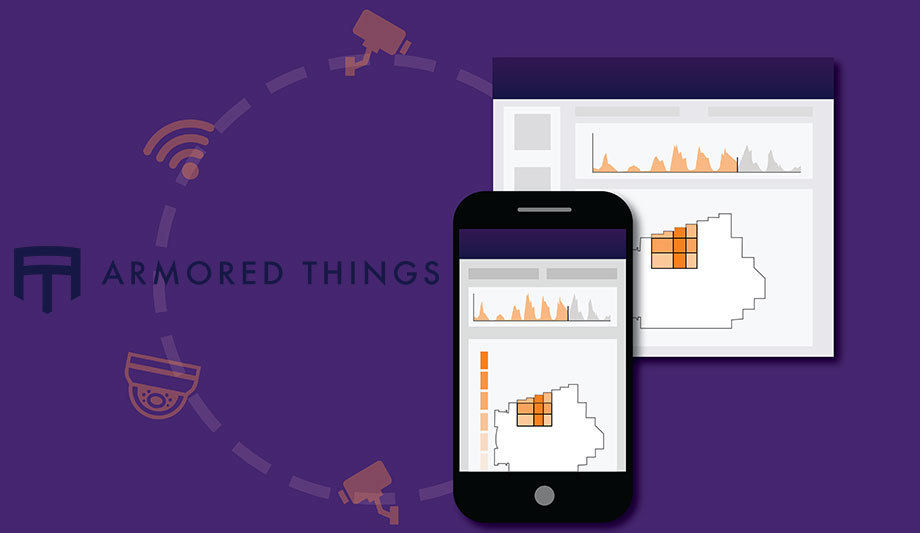Many venues are using access control, video surveillance systems, sensors, and additional hardware solutions as part of a broader security strategy. By utilising so many disparate systems, corporate security teams are left with information “silos” that create inefficiencies and hamper communication. This abundance of hardware has left teams with too much data or too many tools, to manage effectively. Armored Things offers a software solution.
The company’s “spatial intelligence platform” currently collects more data than other security intelligence solutions, utilising a broader range of sources and fusing data together rather than integrating it. The platform currently focuses on taking in data from WiFi, access control, and video surveillance systems and applying machine learning to deliver customers features such as real-time predictive analytics to prevent incidents like bottlenecks or overcrowding. Spatial Intelligence is an approach to physical security that enables users to collect, manage, and interpret data in a single platform.
Combine machine learning with data
The term can best be used to describe how digital transformation has affected physical security. Spatial Intelligence in its infancy looked like video surveillance data combined with machine learning to produce video analytics. The spatial intelligence solutions of today can combine machine learning with data of any source, type, and size to deliver value across a large organisation, not just the security team, says the company. Armored Things’ Spatial Intelligence platform unifies data from information silos to support data-driven decisions around operations and security.
By fusing data from multiple sources, we can produce more consistent and useful insights for our customers”
A suite of analytics, reporting and visualisation tools helps customers gain a real-time understanding of people and flow in their space. By removing the guesswork of everyday decisions, the product enables customers to make data-driven decisions at a moment’s notice, according to the company. Armored Things is more than a data management tool. “By fusing data from multiple sources (rather than only cameras or only WiFi), we can produce more consistent, accurate, and useful insights for our customers,” says Kevin Davis, Chief Security Officer at Armored Things. "Being able to collect the data is the first step, but turning it into actionable intelligence is where Armored Things excels.”
IP cameras and other IoT-enabled devices
The range of data sources includes IP cameras and other IoT-enabled devices and even outside data sources like bus schedules and weather reports. Armored Things has built a team of public safety and technical experts with the mission to keep people safe where they live, work, and play. By leveraging emerging technology to enhance physical security, the company built the software-centric Spatial Intelligence Platform for large organisations to enhance the safety and operations of their space.
Schools and education facilities are among the customers that can benefit. The leadership at Armored Things cares deeply about school safety, so the recent epidemic of campus violence has definitely been a large topic of conversation, according to the company. “By delivering our products to a greater number of customers, Armored Things hopes to continue making schools a safe place to learn and gather,” says Davis. Recently, there was a significant bottleneck lasting nearly 30 minutes at the Syracuse-Clemson football game.
Unifying data into one platform
Digital transformation is disrupting the way our customers think about physical security,”
Using Armored Things technology and providing real-time data to security and operations personnel could have identified the bottleneck as it began to form. This would have notified relevant personnel, who could have taken steps to mitigate the problem before it turned into a security risk. Keeping the security infrastructure simple is imperative to success. Integrating a software solution into the security strategy shouldn’t complicate existing operations, says the company. “Armored Things Spatial Intelligence Platform can bring your security and operations into focus by unifying all of your data into one platform for ease of use,” says Davis.
For this reason, the team chose to integrate not only with customers’ existing security infrastructure but with non-traditional data sources (e.g. WiFi, event schedules, ticketing) as well. “By combining and analysing a more diverse dataset, Armored Things can help our customers make better decisions with deeper data-driven insights,” says Davis. "Digital transformation is disrupting the way our customers think about physical security,” says Davis.
“As a team, our aim is to help our customers adapt to the digital age, as they transition from hardware to software-centric security solutions. Fostering organisational change is difficult, and our team hopes to make the transition process easier for our customers.”








